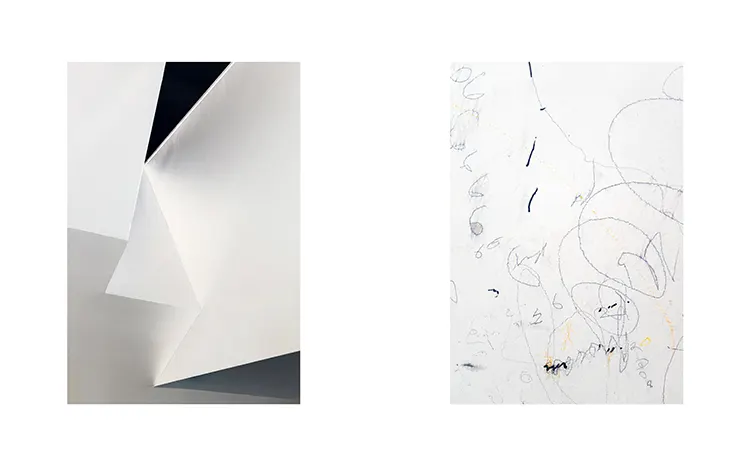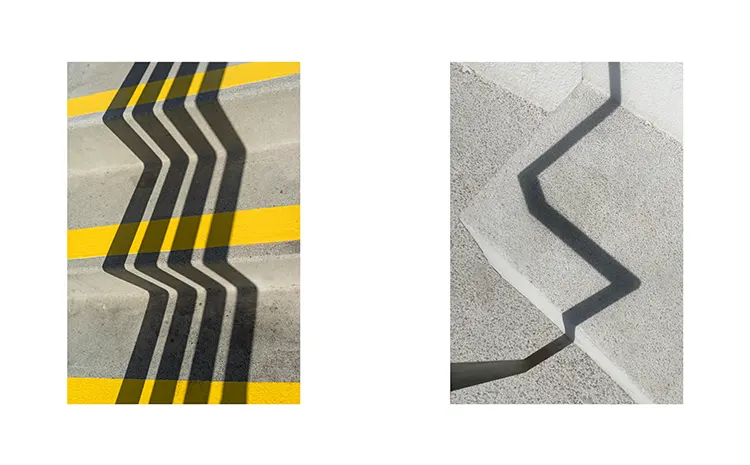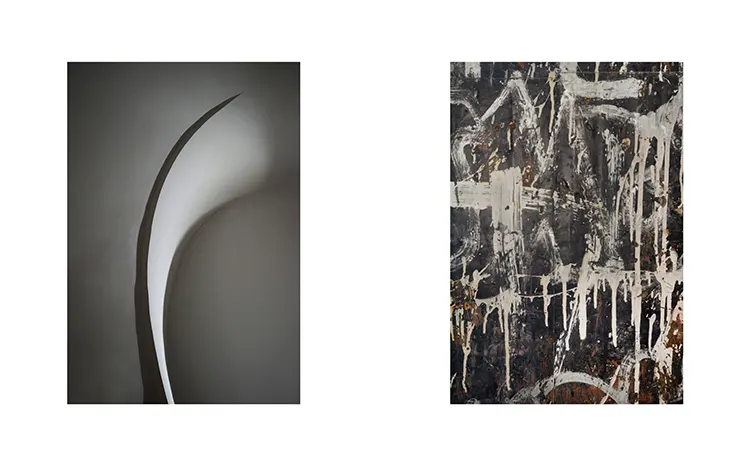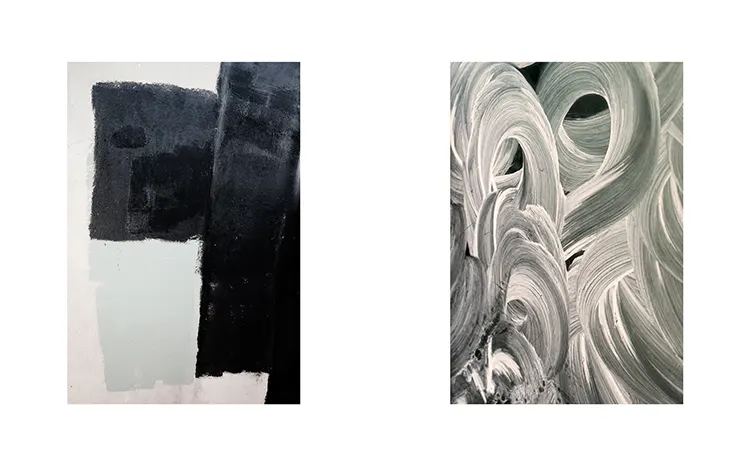“I love finding something amid the rubble or scrawled on the wall of an alleyway – finding high art in low places.”
Duncan’s Mid-Century Influence: Monochromatic Memories
Duncan belongs to the Baby Boomer generation, a demographic deeply steeped in mid-century American culture. His middle-class upbringing was characterized by the monochromatic world of black and white television and a constant presence of LIFE magazine on the family coffee table. The limited media exposure of that era, encompassing television, magazines, and cinema, profoundly shaped his worldview. A particular turning point was the encounter with Jackson Pollock’s feature in LIFE, which left an indelible impression on his young mind.
Residing in a small Texan town did not deter Duncan from seeking connection with the wider world. He subscribed to the Sunday edition of the New York Times, an urban and sophisticated publication that arrived on his doorstep every Thursday. Despite the geographical isolation, this regular intellectual encounter bridged the gap between his provincial surroundings and the cosmopolitan world beyond.
Duncan’s family background, while not devoid of dysfunction, played a significant role in shaping his artistic sensibilities. The stifling environment, marked by emotionally restrained conservative middle-class values, inadvertently nurtured his appreciation for minimalism. He developed a fondness for unadorned simplicity, envisioning spaces as clear and tranquil as a cloudless sky.
His penchant for abstraction, moreover, is rooted in its inherent freedom from a single narrative. Duncan values the subjective interpretations that abstract art engenders, relishing the lack of confinement to one specific context. His enduring love for abstraction is, in essence, a reflection of his desire for freedom and a multiplicity of perspectives.

The Unconventional Path: Photography as an Artistic Voyage
From an early age, Duncan exhibited a natural aptitude for the arts. His artistic vision has been profoundly influenced by the abstract expressionist movement, while photography has granted him the opportunity to venture beyond a singular aesthetic.
Duncan’s desire to pursue photography can be traced back to his childhood. However, the financial constraints and the necessity for a dark room and specialized equipment initially prevented him from realizing his passion. The introduction of Polaroid’s affordable camera, The Swinger, in 1965 marked a turning point for the then twelve-year-old artist, allowing him to embark on a lifelong journey of capturing images.
In contrast to artists who maintain a dedicated workspace, Duncan’s creative process is intrinsically intertwined with his everyday life. As he traverses the urban landscape with his camera in hand, he discovers an ever-evolving, open-air gallery of artistic expressions. Duncan revels in uncovering the extraordinary within the ordinary, identifying elements of high art in the most unassuming of locations, such as a hidden gem amidst debris or an evocative piece of street art tucked away in an alley.

Photography as Catharsis: Duncan’s Personal Retreat
Duncan first interacted with the world through the lens of a camera in 1965, at the tender age of twelve. This newfound medium became a sanctum of self-expression where he navigated the intricacies of life without external judgment or guidance. The freedom to experiment and learn from his own failures, devoid of hovering supervision, was invigorating. As a naturally introverted and reticent individual, Duncan found that photography served as a cathartic outlet, helping him channel his latent energy into tangible works of art.
In the intricate process of photo editing, Duncan delves into a state of undisturbed concentration. He dons his headphones, immersing himself in serene melodies while his phone, set to airplane mode, stands by, ensuring an uninterrupted workflow. This isolation offers him the freedom to meticulously sift through his expansive archives, reviewing and post-processing images with the aid of Photoshop.
The realm of abstract art has significantly shaped Duncan’s artistic vision, with figures like Jackson Pollock, de Kooning, Kline, Rothko, and Motherwell offering profound inspiration. However, one of the most impactful encounters in Duncan’s journey was meeting the renowned Cy Twombly. The young artist was captivated by Twombly’s chalkboard scrawlings from the early 1960s, and his abstract interpretations of Greek mythology. These influences continue to fuel Duncan’s understanding and appreciation for the potency of abstract art.
As he explored the world of “abstract photography,” Duncan drew inspiration from the works of esteemed photographers such as Paul Strand, Minor White, Brett Weston, Ernst Hass, and Dennis Hopper. Their unique perspectives and innovative techniques have been instrumental in shaping Duncan’s photographic style and vision.

Abstract Photography: Drawing Inspiration from the Masters
In the expansive realm of abstract photography, one iconic image consistently emerges from the collective consciousness. This seminal work, often hailed as among the first abstract photographs, was masterfully captured by the renowned photographer, Paul Strand. Upon Duncan’s initial encounter with this piece, its stark modernity evoked visions of architectural marvels, conjuring images reminiscent of the Tryon and Perisphere from the 1939 New York World’s Fair. The true subject of the photograph, however, was far more mundane—an overturned round table top, artfully catching the interplay of sunlight streaming through the slats of a nearby railing. Astonishingly, this profound study of light and form was created in the year 1917.
In Duncan’s artistic journey, a deep-seated aspiration is to stage an exhibition of his abstract and minimalistic pieces in the heart of Paris. He recalls a particular gallery, available for hire in the city, which he envisions as the perfect backdrop for his work. This desire extends beyond the lure of commercial success; it is, in essence, a personal quest, a milestone he seeks to achieve. Regardless of the turnout, the artist is driven by the compelling need to inhabit this space for a fortnight, surrounded by his creations. Should he cross paths with a kindred spirit, or find an appreciative patron for his work, it would be a bonus, further enhancing the fulfillment of this ‘bucket list’ ambition. The prospect of realizing this dream within the current year fills him with a quiet optimism.
Parallel to this, Duncan also nurtures a dream of establishing a virtual platform—a website dedicated to showcasing his abstracts in the form of posters. To bring this vision to life, he seeks a talented graphic designer, one with whom he can forge a collaborative partnership. Each poster would be thoughtfully designed, reflecting the name of the city and time the original image was captured. Furthermore, Duncan envisions using part of the proceeds from these sales to support various charitable foundations close to his heart, thus merging his artistic pursuit with his commitment to philanthropy.






